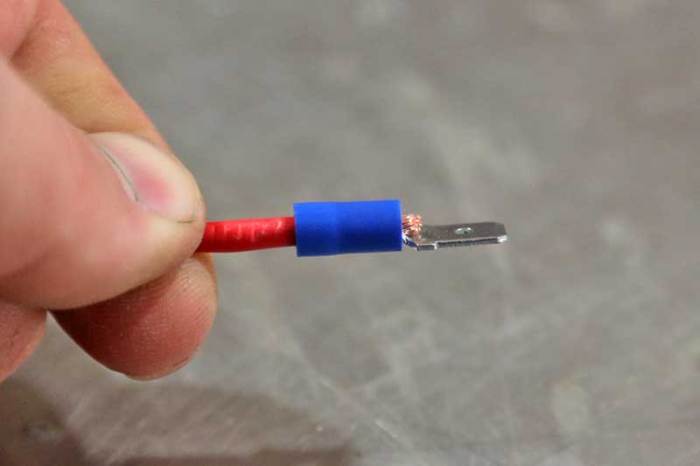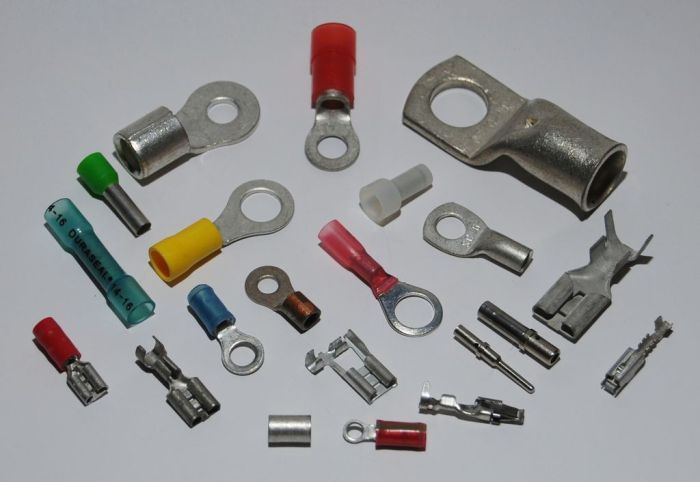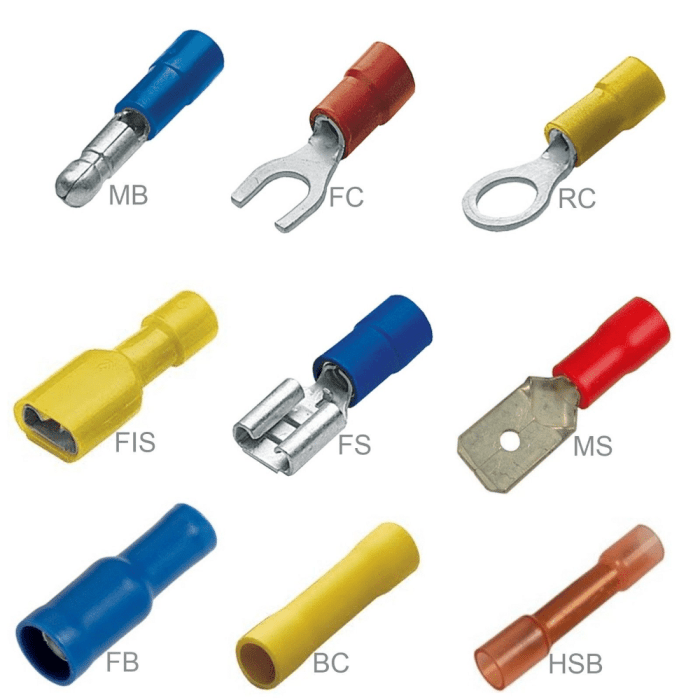Which statements are true about wire terminals and connectors? This question takes center stage as we delve into the fascinating realm of electrical connections. From understanding the diverse types of wire terminals and their applications to exploring the advantages and disadvantages of various wire connectors, this discussion promises to illuminate the intricacies of these essential components in electrical systems.
As we progress, we will also shed light on the paramount importance of electrical safety when working with wire terminals and connectors. By adhering to industry standards and regulations, we can ensure the reliability and longevity of electrical connections. So, join us on this electrifying journey as we unravel the complexities of wire terminals and connectors.
Wire Terminals

Wire terminals are electrical components used to connect wires to other electrical devices or components. They provide a secure and reliable connection, ensuring the proper flow of electrical current. There are various types of wire terminals available, each designed for specific applications and wire sizes.
- Ring terminals:Ring terminals have a circular loop at one end that fits around a screw or bolt. They are commonly used for connecting wires to terminals on electrical panels, circuit breakers, and other devices.
- Spade terminals:Spade terminals have a flat, spade-shaped end that slides onto a spade connector. They are often used in automotive applications and for connecting wires to switches and relays.
- Butt connectors:Butt connectors are used to join two wires together. They have a barrel-shaped design with a crimping area in the middle. The wires are inserted into the barrel and crimped together, creating a secure connection.
- Wire nuts:Wire nuts are used to connect multiple wires together. They have a conical shape with a threaded interior. The wires are twisted together and then the wire nut is screwed on, creating a secure and insulated connection.
Wire terminals are typically made of copper or brass, which are good conductors of electricity. They may also be coated with tin or nickel to prevent corrosion. The choice of terminal material depends on the specific application and the environment in which it will be used.
Wire Connectors

Wire connectors are used to join two or more wires together, creating a secure and reliable electrical connection. There are various types of wire connectors available, each with its own advantages and disadvantages.
- Crimp connectors:Crimp connectors are the most common type of wire connector. They are made of a metal tube with a crimping area in the middle. The wires are inserted into the tube and crimped together using a crimping tool. Crimp connectors provide a secure and reliable connection that is resistant to vibration and corrosion.
- Solder connectors:Solder connectors are used to join wires together by soldering them. Solder is a metal alloy that melts at a low temperature and forms a strong bond between the wires. Solder connectors provide a permanent and reliable connection that is resistant to vibration and corrosion.
- Twist-on connectors:Twist-on connectors are made of a plastic cap with a metal insert. The wires are twisted together and then the cap is screwed on, creating a secure connection. Twist-on connectors are easy to use and are often used for temporary connections or in applications where space is limited.
- Push-in connectors:Push-in connectors are made of a plastic housing with metal contacts. The wires are simply pushed into the contacts, creating a secure connection. Push-in connectors are easy to use and are often used in applications where speed and convenience are important.
The choice of wire connector depends on the specific application and the environment in which it will be used. Factors to consider include the wire size, the number of wires being connected, the type of connection required, and the cost.
Essential Questionnaire: Which Statements Are True About Wire Terminals And Connectors
What are the different types of wire terminals?
Wire terminals come in various types, including ring terminals, spade terminals, butt connectors, and insulated terminals. Each type serves a specific purpose and is designed for different applications.
What is the purpose of a wire connector?
Wire connectors are used to join two or more wires together, creating a secure and reliable electrical connection. They come in different types, such as twist-on connectors, crimp connectors, and solder connectors.
Why is electrical safety important when working with wire terminals and connectors?
Electrical safety is paramount because improper handling of wire terminals and connectors can lead to electrical shocks, fires, and other hazards. Proper insulation, grounding, and adherence to safety protocols are essential for preventing accidents.
